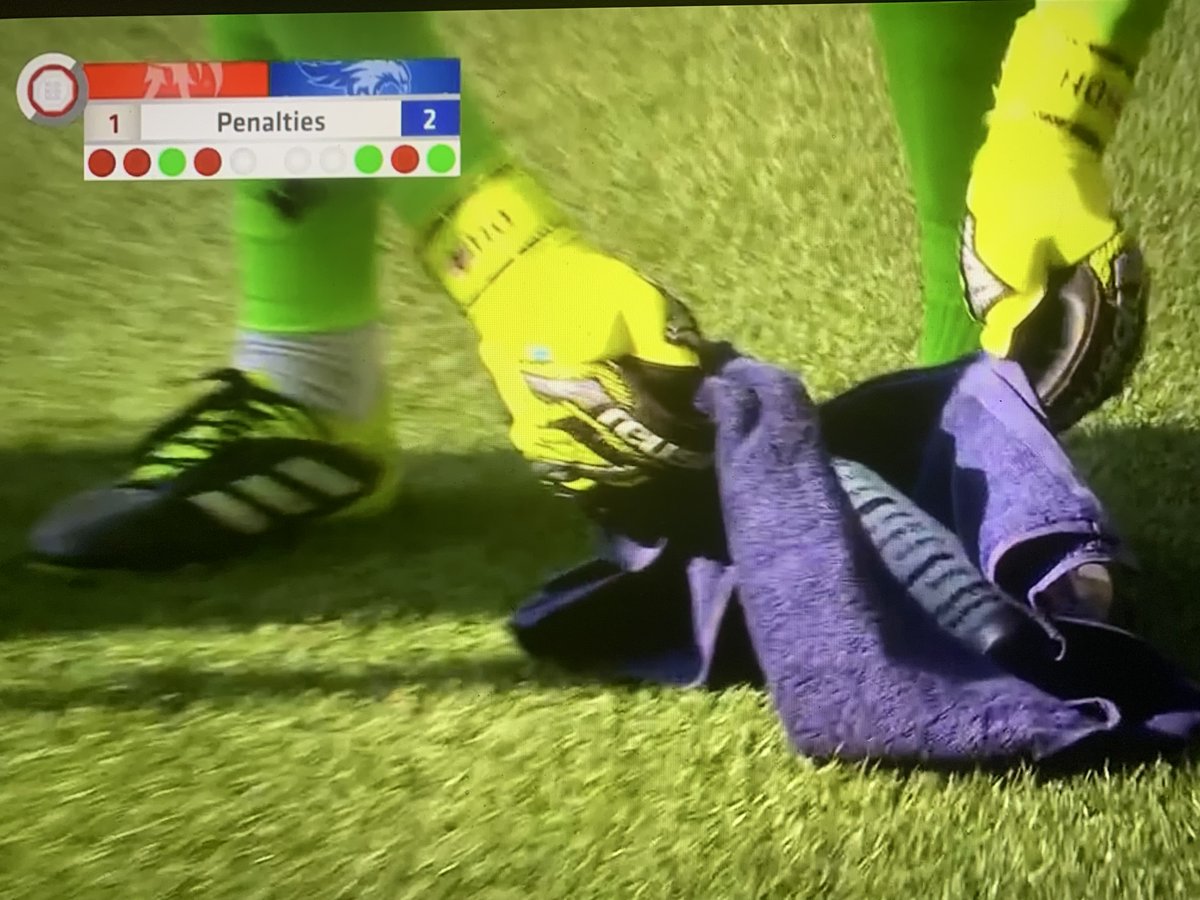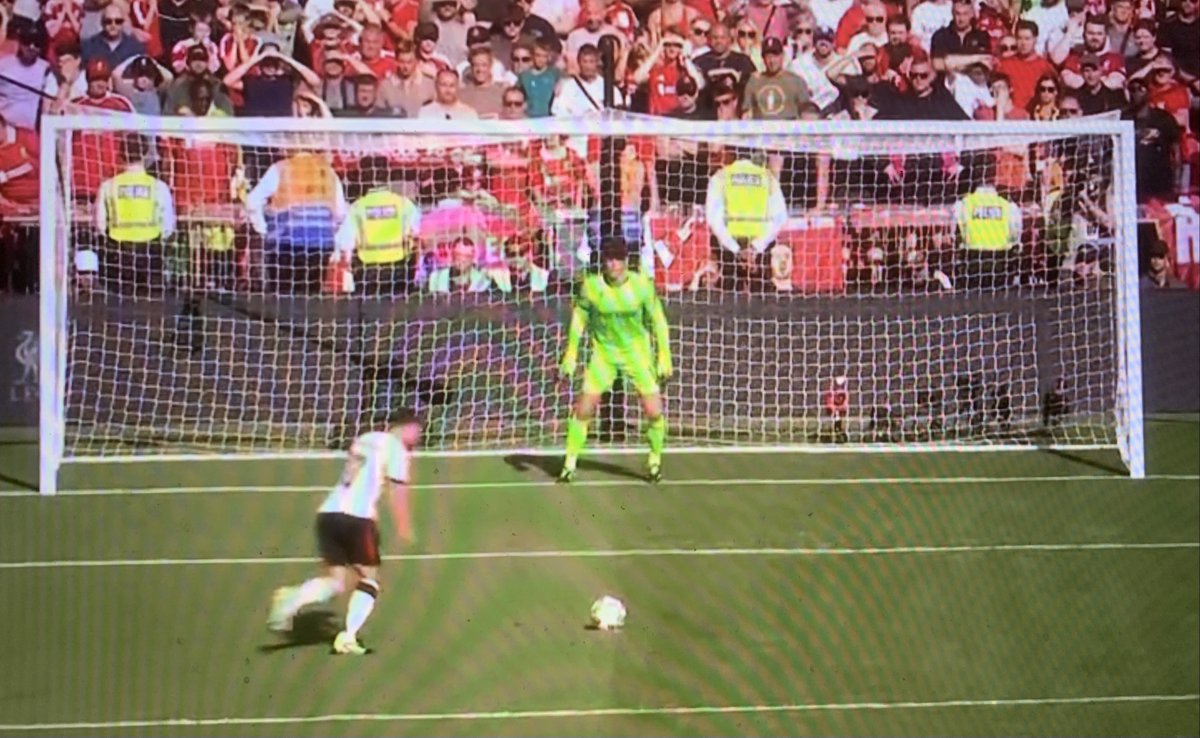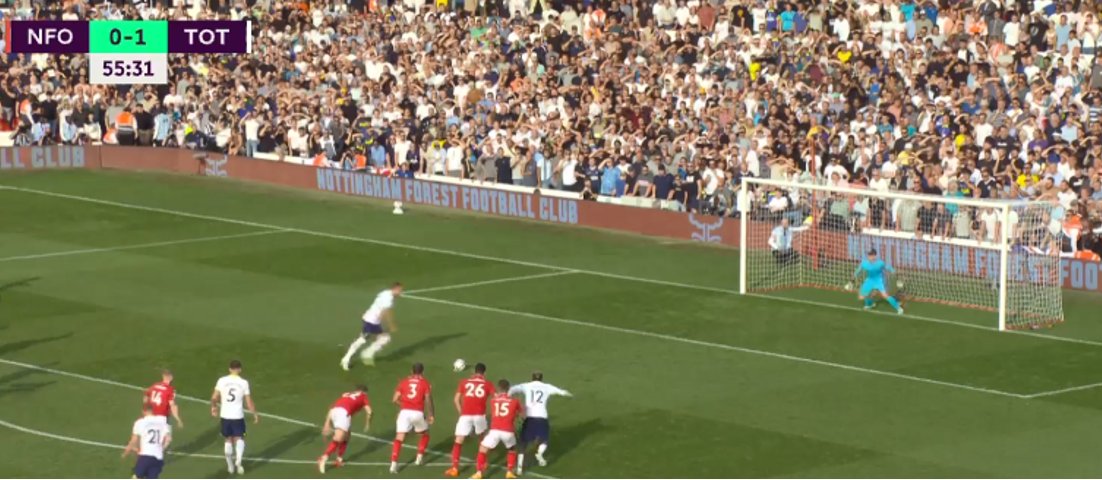11 seconds. Marcus Rashford. Nobody has EVER stood that long prior to a kick in a big tournament penalty shootout (for 45 years)! What does time spent standing still after the referee’s whistle say about performing under pressure? Thread about time, penalties, and Rashford (1/9) 

Historically, quick is linked to misses; players sometimes seek relief from pressure and rush to the detriment of shot quality (sciencedirect.com/science/articl…). The 3 shootouts BEFORE the final support this; those who scored took considerably more time than those who missed (2/9) 
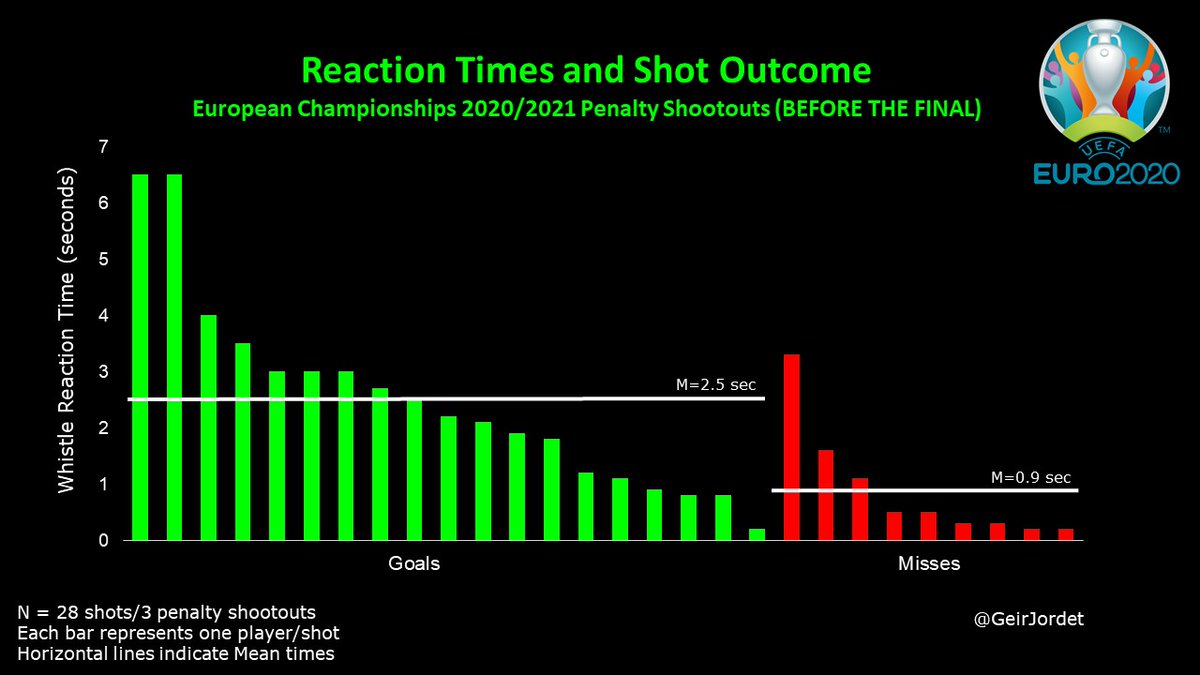
This was reversed in the extraordinary penalty shootout in the final. ENG and ITA players who missed their penalties took unusually long time to start moving after the referee’s signal (on average), and noticeably longer than players who scored. Why the changed pattern? (3/9) 

The final was NOT special because of time taken prior to goals. Players who scored took 2.5 seconds (identical to tournament average). Kane (5) and McGuire (4.5) longest. However, players who missed took much longer than previously. Rashford (11) and Belotti (7) longest (4/9) 
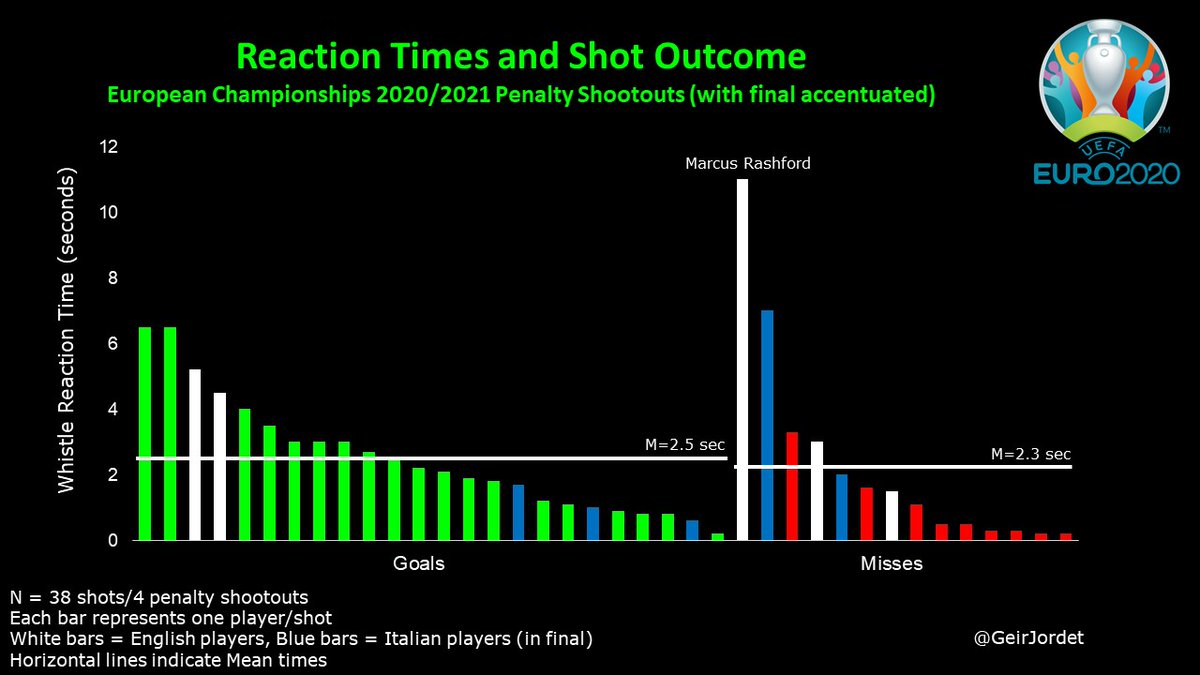
Rashford always takes time at the penalty mark, usually with success. With his last 12 penalty kicks prior to the Euros (10 goals), he took 5,7 seconds after the whistle (average, min: 3, max: 8). In the final, he raised it. 11 seconds! New world record! Why the extra wait? (5/9) 
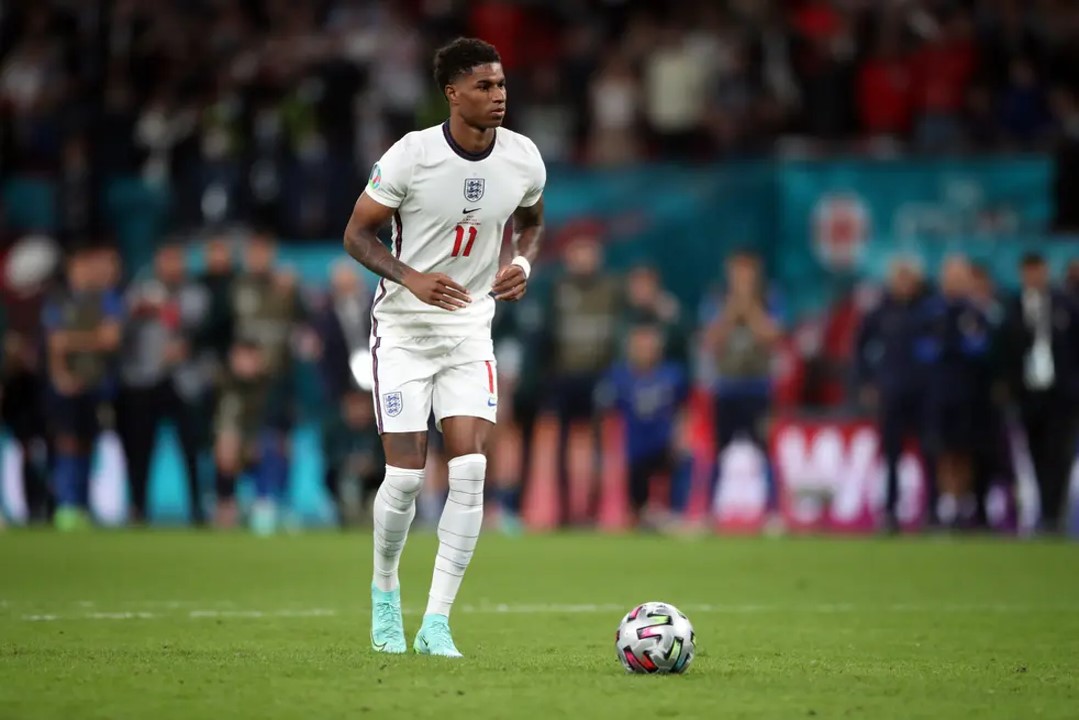
One answer is PRESSURE! A final. 55 years of hurt. Wembley. Substituted on too late. Hardly played in previous games. His words: “A penalty was all I had asked to contribute to the team”. His teammates had done the job so far. Now up to HIM whether everyone gets the reward (6/9) 

This was probably the most important kick in Rashford’s life. He knew: “Something didn’t feel quite right.” He took time trying to cope: “During the long run-up I was saving myself a bit of time and unfortunately the result was not what I wanted.” (7/9) theguardian.com/football/2021/…
Rashford seems to have followed a good recipe to cope. Key to taking time is NOT to pass time for its own sake, which may produce over-thinking and extra stress. Rather, spend a few seconds focusing on what you can control. A few deep breaths, task focus, trust your shot! (8/9) 

Time is as much an effect (of pressure) as it is a cause (of performance). Some react with speed, to end discomfort. Others feel pressure, but don’t escape and stay with the pain until they're ready. This requires incredible emotional discipline. Sometimes that's not enough (9/9) 

Sometimes, mediocre researchers misquote marvelous men... Rashford said, "A penalty was all I'D BEEN asked to contribute FOR the team." My apologies for the typos! @MarcusRashford
• • •
Missing some Tweet in this thread? You can try to
force a refresh


